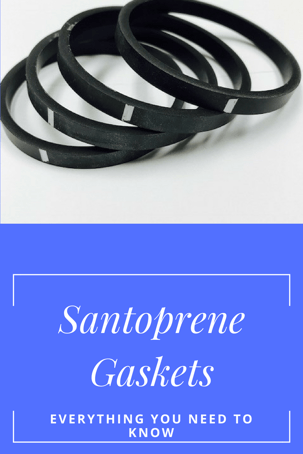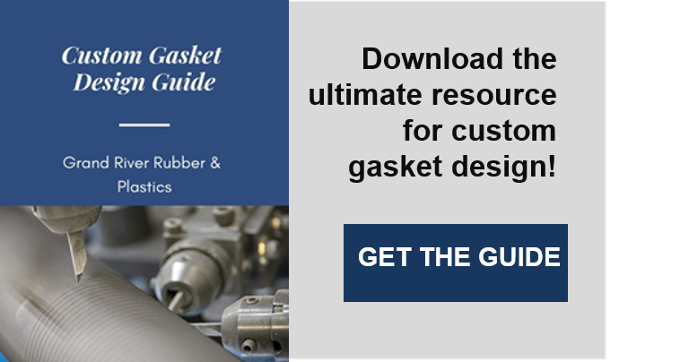
Recently, Grand River’s engineering team have gotten some questions about the use of Santoprene in lathe cut gasket applications. While Santoprene is growing in popularity, it has significant advantages and disadvantages that should be considered. While Grand River doesn’t carry thermoplastics such as Santoprene, our team has extensive knowledge of how Santoprene compares to elastomers in a variety of applications. Learn how Santoprene compares to elastomers below and decide if it is right for your application.
Re-Using Materials and Creating a Greener Footprint
An advantage of Santoprene is that it can be reused and has no scrap. Santoprene is easily reprocessed and molded into new products. Many manufacturers are seeking to have a greener footprint so the idea of using Santoprene is appealing to them. However, reusing Santoprene can be very costly, so it is important to evaluate every project on a cost-by-cost basis.
Commercial Availability of Tailor Made Material
Commercial availability of a tailored materials is more favorable in elastomers compared to Santoprene. Applications with Santoprene have longer set up times and have tooling, while rubber gaskets require no tooling cost through the lathe cut process. Tailor made materials are especially cost effective with elastomers in small runs, while in larger runs, it is not as advantageous.
Hot and Cold Temperature Environments
Santoprene is known as a high performing, long term seal in cold and hot temperature environments. Santoprene is commonly used in automotive, washing machines, driers and other high temperature environments. EPDM is comparable to Santoprene in outdoor applications. EPDM has the ability to resist degradation from weathering agents like UV rays, ozone and heat. Additionally, EDPM is also very resistant to polar substances and steam.
Functionally, EPDM performs significantly better than Santoprene in high temperature applications. EPDM has a temperature tolerance up to 160 Celcius, while Santoprene is favorable up to 100 Celcius. Santoprene has a low compression set and overtime in high heat, the material will not seal as well.
Oil and Gas Applications
If your lathe cut gaskets are coming in contact with hydrocarbon fluid; such as oil or other petroleum based compounds, it is typically favorable to use a nitrile rubber or NBR instead of Santoprene. Nitrile contains various amounts of acrylonitrile, an ingredient which makes the material more or less oil/fuel resistant.
However, something important to keep in mind when using nitrile in an application, is that the level of acrylonitrile affects the gasket’s low temperature resistance. A nitrile high in acrylonitrile has poor low temperature resistance. While nitrile rubber has superior resistance to oil and gas, it is not the most weather resistance material and is best for enclosed applications.
Still Stumped On Whether to Choose Elastomers or Thermoplastics?
Confused which material is best for your lathe cut gasket applications? Check out our blog How to Choose Lathe Cut Gasket Materials for Various Applications for our suggestions. Have additional questions? Please contact our team below with any additional questions.


